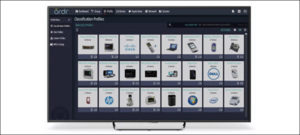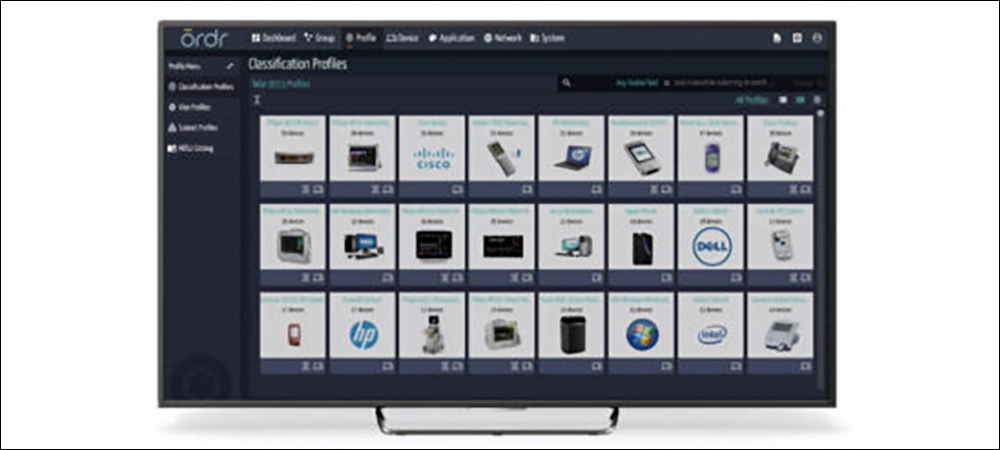Ordr, a provider of security solutions for enterprise Internet of Things (IoT) and unmanaged devices, has announced the availability of its IoT Discovery Program to uncover shadow IoT devices and their corresponding risks. Qualified users will be provided with a kit that includes a cloud-managed, zero-touch provisioning sensor and a limited-duration license to the company’s Ordr Core software. For enterprises that need to maintain continuous visibility across their network, the software subscription delivers foundational device discovery, classification, behavior analysis and risk-profiling functionality.
According to Ordr, enterprise IoT security is a major concern across all industries. More than 25 billion Internet-connected devices are currently in operation, and ZK Research predicts that number will reach 80 billion by 2025. The rapid proliferation of connected IoT devices has created more attack surfaces and vulnerabilities for every enterprise, Ordr explains. “Every connected device is a potential attack vector, especially when deployed outside the purview of security and IT,” said Zeus Kerravala, a principal analyst at ZK Research, in a prepared statement from Ordr. “In order to secure their devices, organizations must start with visibility into what is actually connected, but most organizations don’t have the time or resources to do this manually and have had to live with the risk of not knowing what’s lurking in the shadows.”

Ordr’s IoT Discovery Program solution
The IoT Discovery Program comes with a cloud-managed IoT sensor and the Ordr Core software to get organizations up and running within minutes. Following zero-touch provisioning and installation of the sensor, device data is forwarded to the Ordr Cloud dashboard, enabling enterprises to analyze and act upon granular, connected device insights in order to drive security decisions and improve operational performance. This functionality is free for a 30-day trial period and can then be upgraded to a paid deployment. The program is available through Ordr’s channel partners, including Cadre, Carousel Industries, CDW, GuidePoint Security, Logicalis, Novacoast and The Teneo Group.
“Shadow IoT is a growing challenge for enterprises in every industry,” added Jason Viera, Carousel Industries’ CTO, in the prepared statement. “Organizations have no idea what devices are lurking on their networks, and as IoT adoption accelerates, the problem is only going to get worse. You can’t secure what you can’t see, but Ordr’s IoT Discovery Program gives you visibility into your devices and risks so you can make informed decisions about device security and management.”
“For healthcare organizations, the ability to obtain comprehensive visibility into what’s on their network is critical not only for asset inventory, but overall patient safety as well,” Tom Stafford, CDW Healthcare’s healthcare chief technology officer, also said in the prepared statement. “They need an accurate inventory of devices in the network, to track those that have been recalled, have vulnerabilities or are running aging or outdated operating systems. Ordr’s IoT Discovery Program streamlines this process.”
Ordr Core with zero-touch provisioning enables organizations to discover devices, thereby revealing anything connected to a network, as well as any associated security and management risks. Based on an understanding of device behaviors and risks, companies can then enable automated actions and integrations with the Ordr Premium software subscription to proactively address such vulnerabilities.
“IoT management and security has traditionally been difficult without a comprehensive approach to finding, classifying and securing those devices,” said Greg Murphy, Ordr’s CEO, in the statement. “With our IoT Discovery Program, new software packaging and zero-touch capabilities, every enterprise can inventory all of the devices on their network to understand granular details such as make, model, operating system and vulnerabilities, as well as profile exactly how devices are behaving.”
In addition, Ordr has announced the integration of its Systems Control Engine (SCE) with VMware‘s NSX-T Data Center and NSX Intelligence solutions to provide companies with IoT visibility and accelerated NSX data-center micro-segmentation. This integration, according to the company, provides ongoing programmatic synchronization from Ordr to VMware NSX for profile objects and the respective device IP addresses they contain. With the ability to share detailed campus-related device-type data points with NSX, organizations can view which types of campus devices are communicating with their data center.
Due to the NSX Intelligence integration, organizations can visualize how Ordr-defined campus group objects are communicating with various virtual machines in a data center. “With the Ordr and VMware integration, we have the ability to understand how campus and branch devices communicate with data center workloads and are able to quickly identify unmanaged campus devices and use those insights to streamline NSX policy generation for VMs,” said Brandon Rivera, an enterprise infrastructure architect at Christus Health, in a separate prepared statement. “We will also be able to minimize the business impact of firewall changes by visualizing allowed or blocked campus traffic.”
Whereas organizations previously had only a singular view of an unknown IP for visibility, Ordr explains, its solution provides device context as an object with a grouping construct to programmatically populate that group in NSX. Using NSX Intelligence, businesses can see network traffic flow, along with the Ordr context of the device type. With the integration, NSX users will be able to understand how each type of unmanaged campus- and branch-connected device communicates with mission-critical virtual workloads inside the data center.
Users can accelerate NSX-T Data Center micro-segmentation initiatives by integrating data from Ordr and using NSX Intelligence to visualize and automate optimal policy design, while determining which campus devices, including IoT and OT, are communicating with virtualized workloads in the data center. What’s more, they can minimize the potential business impact associated with firewall changes by using the Ordr solution, integrated with NSX Intelligence, to visualize and troubleshoot allowed and blocked traffic from campus devices.
“Organizations are choosing to protect mission-critical virtualized workloads in the data center with extensive deployment methodologies,” added Iain Leiter, Ordr’s senior technical solutions architect, in the statement. “Ordr is enabling visibility into which types of unmanaged IoT devices are communicating with VMs within the data center, by providing granular device context via API integration with VMware NSX-T Data Center. Customers can now implement NSX Intelligence to streamline the data center micro-segmentation process by combining data-center analytics from SDDC and rich campus device context from Ordr.”


